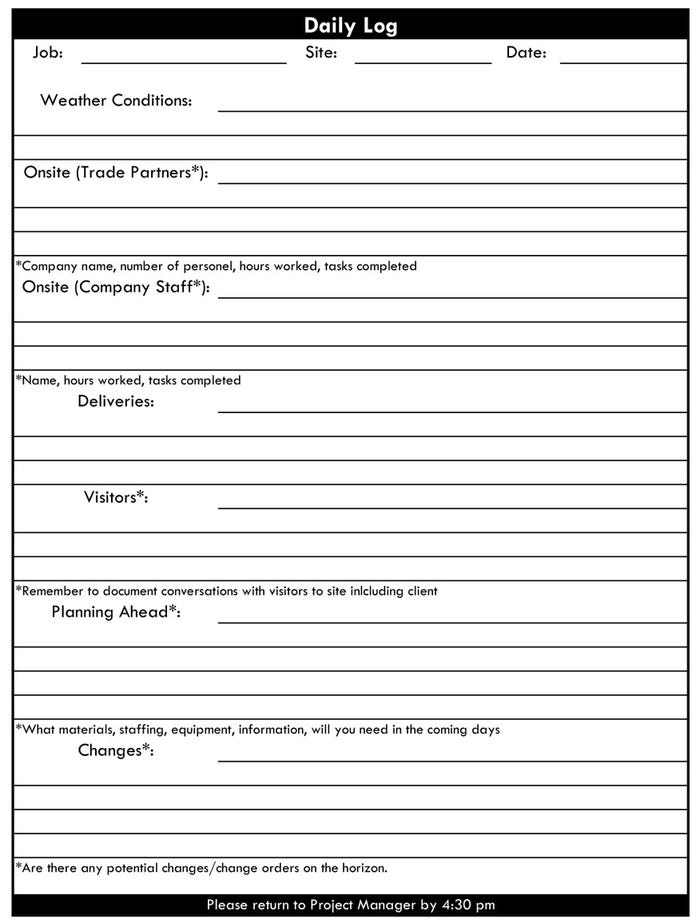Using a Daily Log to Streamline Production
The information recorded in the daily log is critical data for the project management team and the post-project review process.
March 25, 2024

Keeping a daily log is an efficient way to record important details about the client, trade partners, and our own teams that can be used to improve the current project’s closeout process and referenced on future projects to strengthen workflows and avoid repeating mistakes. It is also a means of communication between the client and builder; in some contractual situations, providing a daily log to the client is a requirement.
Everyone on the job must be involved in maintaining this record. If project managers and construction managers are unable to visit jobsites every day due to increasing workloads and labor shortages, the information recorded by trade partners in the daily log is critical data for the project management team and contributes to the post-project review process. Equally important, when trade partners are heavily involved in the work, it helps ensure accountability for their tasks.
A daily log can be as simple as a Word or Notes document. When using Word or Notes, we save the daily files to a “Logs” subfolder within a given job’s main folder. Alternatively, a daily log can be part of project management software; it’s a typical feature of Builder Trend, Co-Construct, BuildXact, and JobTread, to name a few. Even using a traditional paper form (see example, below) is sufficient, though this requires the extra step of scanning it so it can be emailed to all parties as needed.
To read the rest of the story from JLC, click here.

About the Author(s)
You May Also Like




